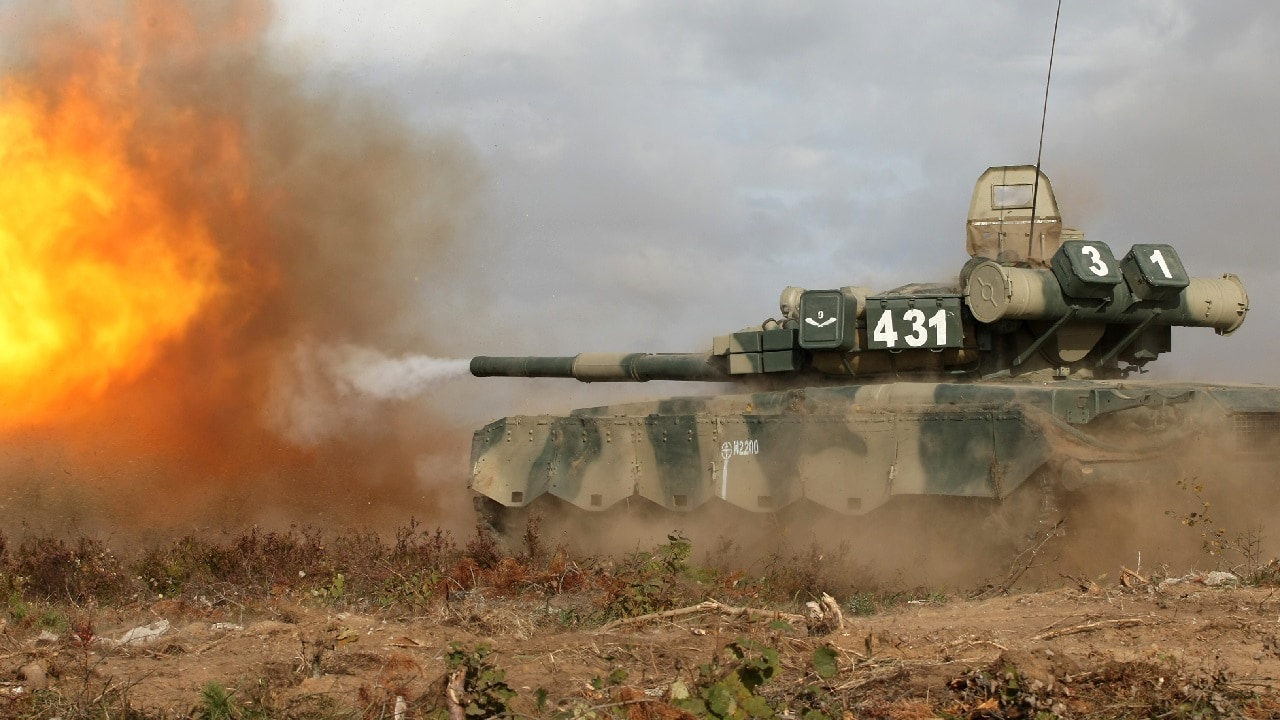If Russia’s Donbas Offensive is Stopped, the Ukraine War is a Stalemate: The last big Russian push in the Ukraine war has begun. The Russian army has regrouped after its earlier, uncoordinated assaults all over Ukraine. It is now concentrating on Donbas, the eastern portion of Ukraine. After its humiliating defeat around Kyiv, this is likely Russia’s last chance to fight a war of maneuver – to break through Ukrainian lines with its armored columns and wreak havoc in Ukraine’s rear. Russia’s large commitment of tanks and other armored vehicles – and their well-documented destruction by Ukrainian soldiers – strongly suggests this is the type of war Russia wants to fight, but which Ukraine has stymied so far.
The Course of the War So Far
Russian President Vladimir Putin clearly expected a blitzkrieg. Putin seems to have believed his own propaganda that Russian forces would roll over weak defenders weakly committed to a corrupt, semi-failing state with a low sense of national identity. Putin has repeatedly claimed that Ukraine is a ‘fake country.’ He has been subverting it for a decade. In 2014, he snatched Crimea from it. His likely goal in the war now is to break off another chunk in Donbas as Russia-dependent statelets.
The sloppy Russian actions in the first month of the war suggest Putin believed this narrative, and the result is that Russia squandered the advantages of surprise. Had it been staged and coordinated properly – combined arms failed spectacularly – it might have knocked Ukraine out of the war before it could mobilize and before Western aid could make a difference.
This failed, and Russia is now fighting a massive proxy war it probably cannot win if it does not win soon. Western aid coordination problems will soon be worked out, and NATO heavy weapons are already on their way. Ukraine is a motivated, increasingly well-armed opponent. Punishing Western sanctions will gradually undercut the Russian economy’s ability to support the war effort. The window for a quick Russian victory – which could permit a quick end to the war’s losses and a quick end of sanctions – is closing.
The Donbas offensive is Russia’s last chance to wrap this up soon and avoid a long, punishing grind. A drawn-out conflict of attrition similar to World War I or the Vietnam War looms, and even if Russia were to somehow win that in a year or two, it would be a pyrrhic victory.
Donbas is the Best Area for a Russian Assault
Donbas is a good target for a last Russian gamble. The territory is flatter and more open than the urban warfare it tried – and failed at – around Ukraine’s cities. Russia’s desire to deploy tanks is better suited here. Ukrainian ambush teams will find it harder to approach Russian columns in open space.
The population of Donbas is, ostensibly, sympathetic. Eastern Ukraine has a larger portion of Russian-speakers and ethnically Russian people than the rest of Ukraine. It is to defend them against Ukrainian ‘Nazis’ that Putin launched this war. There are already Russian-sponsored separatists active in Donetsk and Luhansk. If there is anywhere in Ukraine where the Russian assault might find local sympathy, it is here.
Russian Advantages
The unfolding Donbas struggle will be the toughest challenge yet for Ukraine. The Russian military has almost certainly learned from its errors of the first six weeks. It will probably not make amateur mistakes – sending light armored units far in advance unaccompanied, leaving long columns of vehicles lined up for days in easy ambush position, not informing its soldiers of their actual missions – again.
Russian armor should, if properly supported by infantry, be much more devasting than before. The lines of contact in Donbas are long; in some cases, there are trenches. Static, open positions like this are precisely what tanks were designed to outmaneuver. If Russian armor can finally move at speed, its tanks should be able to reduce their losses to drone strikes. Ukrainian ambush teams will also find it harder to track them and be more exposed to retaliation. And if the Russians really breakthrough, they might encircle the bulk of the Ukrainian army east of the Dnieper River. Were that to happen, Ukraine would likely sue for peace.
The emerging consensus is that if Ukraine does not receive heavier weapons from NATO, it will probably lose ground. This likely why Russia resumed its offensive so rapidly after retreating in the north. It needs to outrace the arrival of NATO aid.
So Russia has a decent chance in this next phase. Its firepower will be concentrated on one front. It will likely fight more coherently, having learned from last month’s bloody nose. NATO heavy weapons will take time to arrive, and pervious Ukraine’s advantages – in drones, nimble ambush squads, urban terrain – will matter less this time.
But Ukraine survived for the last sixty days when few analysts thought it would. It is better led and motivated, and Russia’s firepower advantage is eroding if only NATO can accelerate its arms transfers. If Ukraine blunt this offensive long enough for those advanced weapons to level the playing field, the war will degenerate into a stalemate. Putin might be tempted to break that with a weapon of mass destruction – but the associated costs of that are massive and unpredictable.
Far more likely is that, post-Donbas offensive, the invasion becomes a battle of attrition which Russia loses slowly over time.
Dr. Robert E. Kelly (@Robert_E_Kelly; website) is a professor of international relations in the Department of Political Science at Pusan National University. Dr. Kelly is a 1945 Contributing Editor as well.

